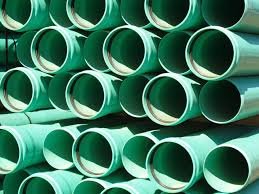When it comes to selecting the right type of pipe for water supply, sewage, or industrial use, two names often come up — HDPE (High-Density Polyethylene) and PVC (Polyvinyl Chloride). Both are popular choices, but they have different characteristics, benefits, and applications.
Let’s break down the key differences in simple terms to help you choose the right one for your project.
Material Composition
-
HDPE Pipes are made from high-density polyethylene, a flexible plastic known for its strength and durability.
-
PVC Pipes are made from polyvinyl chloride, a rigid plastic that has been used in piping systems for decades.
The basic material difference affects their strength, flexibility, and resistance to chemicals and weather.
Flexibility and Durability
-
HDPE is extremely flexible and can bend without breaking, making it ideal for uneven terrains or underground systems that shift.
-
PVC is more rigid and can crack under extreme pressure or movement.
This makes HDPE a better choice for projects in areas with ground movement or vibration.
Pressure and Impact Resistance
-
HDPE Pipes can handle high pressure and are resistant to impact. They’re often used in high-pressure water systems or in industrial setups.
-
PVC Pipes work well in low to medium-pressure systems and are more prone to damage under impact.
If your system requires strong pressure handling, HDPE is usually the better choice.
Joining Methods
-
HDPE Pipes are joined using heat fusion, which creates leak-free and durable joints.
-
PVC Pipes are joined using solvent cement or mechanical fittings, which are easier to install but may not be as strong over time.
While PVC is easier for small DIY setups, HDPE offers stronger and longer-lasting connections.
Cost Comparison
-
PVC Pipes are generally cheaper and widely available, making them a cost-effective choice for many standard applications.
-
HDPE Pipes are more expensive upfront but offer longer service life and less maintenance, especially in demanding environments.
If you’re on a tight budget and working on a low-pressure system, PVC might suit you. For long-term use in harsh conditions, HDPE is worth the investment.
Chemical and Corrosion Resistance
-
Both HDPE and PVC resist corrosion from most chemicals, but HDPE has a slight edge in resisting acids, salts, and other harsh substances.
-
This makes HDPE more suitable for chemical plants, waste systems, and exposed environments.
Environmental Impact
-
HDPE Pipes are recyclable and have a lower environmental footprint over time due to their long lifespan.
-
PVC Pipes are also recyclable, but the manufacturing process can release more chemicals.
If sustainability matters to your project, HDPE might be the greener choice.
Common Applications
HDPE Pipes:
-
Water and gas distribution
-
Sewage and drainage systems
-
Industrial fluid handling
-
Irrigation systems
PVC Pipes:
-
Plumbing in homes and buildings
-
Low-pressure irrigation systems
-
Electrical conduit
-
Rainwater drainage
Final Thoughts
Choosing between HDPE and PVC depends on your specific needs — pressure, durability, environment, and budget.
If you’re working on a basic plumbing or drainage system, PVC is cost-effective and easy to use. But for industrial, high-pressure, or long-term applications, HDPE is the smarter choice due to its flexibility and strength.
One brand trusted for quality and variety in both types of pipes is Plasco Pipes. Whether your project requires flexibility or rigidity, they offer dependable solutions that meet modern construction needs.







